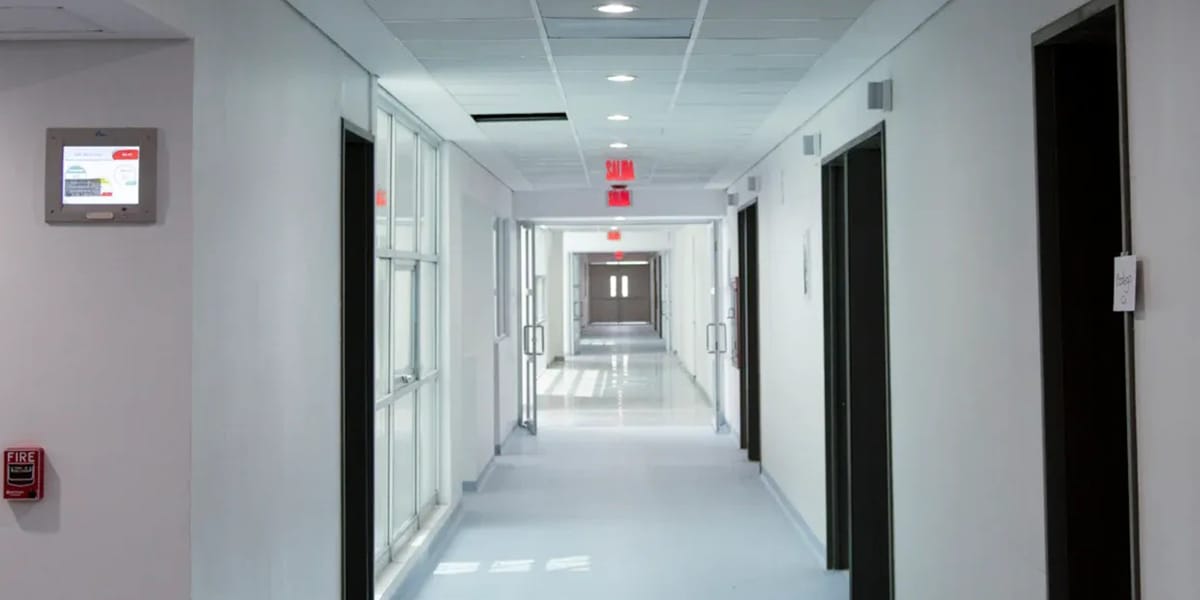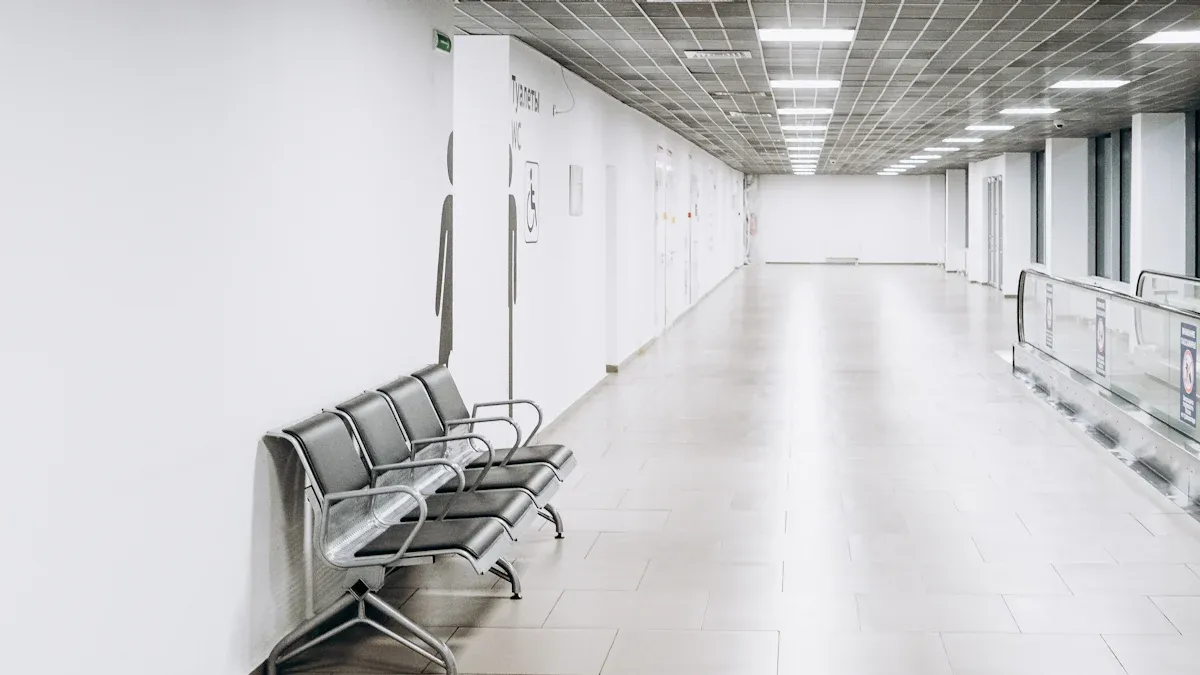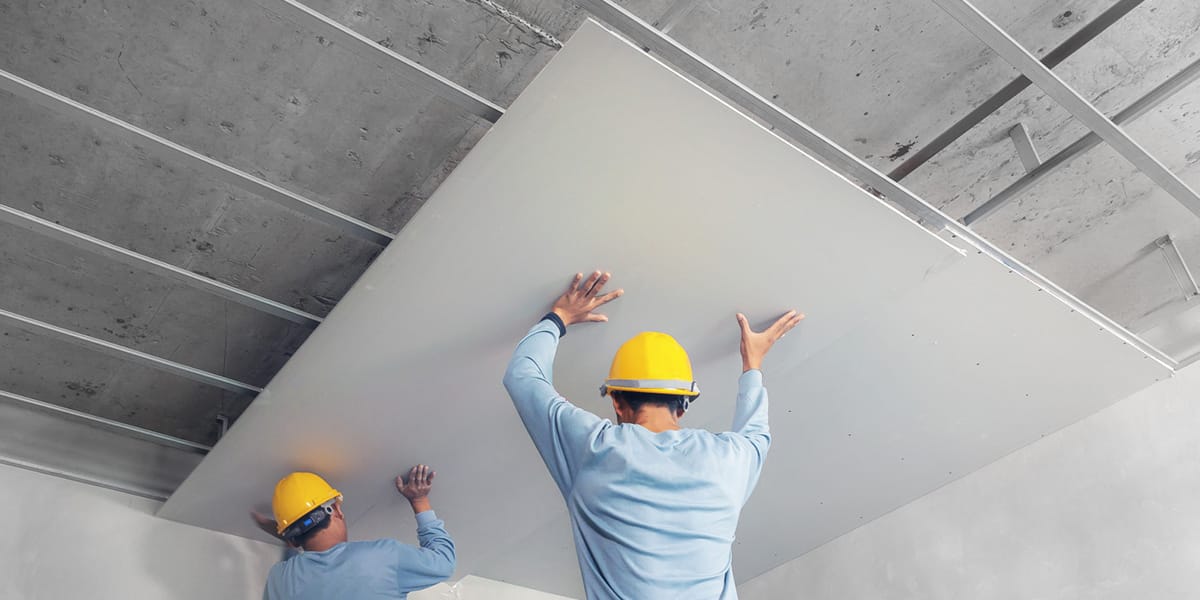
17 Aug Magnesium Wall Board For Hospital Decoration
Table of Contents
Choosing the best wall material for hospitals is important. It affects safety and how patients feel. You should focus on biocompatibility, strength, and corrosion resistance. These things matter when picking materials for healthcare spaces. Surface treatments and quality checks help lower infection risks. Magnesium wall board is a new option that fits tough rules for use and looks. You can get strong walls and a friendly space at the same time. This also helps control costs over time.
Key Takeaways
Magnesium wall board is very good at stopping fires. It meets high safety rules and helps keep hospitals safe from fire. It does not let water or mold in, so hospital walls stay dry. This helps lower allergy problems for patients and workers. The board is tough and lasts a long time. It is stronger than gypsum or PVC panels. It does not get damaged easily from daily use. Magnesium wall board has many looks and finishes. Hospitals can make rooms safe and nice to see. It costs more at first, but it saves money later. You do not need to fix or care for it as much.
Why Choose Magnesium Wall Board
Fire and Moisture Resistance
Hospitals need walls that keep people safe from fire. Magnesium wall board is very good at stopping fire. It follows tough safety rules from around the world. This makes it a smart pick for hospitals. The table below shows how it does in fire tests:
Certification / Standard | What It Tests / Measures | Fire Resistance Rating / Classification |
|---|---|---|
ASTM E136 | Checks if the board will not burn | Classified as Noncombustible |
ASTM E84 | Looks at how fast flames and smoke spread | Achieves Class A rating |
EN 13501-1 | European test for fire safety in buildings | Classified as Class A1 (noncombustible) |
CAN/ULC S114 and ULC S135 | Canadian fire safety rules | Meets rules for not burning and fire safety |
Magnesium wall board can handle heat up to 1200°C and stays strong. It does not make dangerous smoke if there is a fire. This is why it works well for hospital walls and ceilings that need fire safety.
Keeping out water is also important in hospitals. You often see magnesium wall board in wet places like labs and cleanrooms. It does not change shape after getting wet for a short time. It does not swell or bend. Newer boards with mineral fibers last even longer in damp places. They stay strong even when it is wet.
Tip: Pick magnesium wall board with extra moisture protection for rooms that are always humid. This helps stop mold and keeps walls dry.
Antibacterial and Hypoallergenic
Hospitals want to stop germs and allergies. Magnesium wall board helps with this. It stops mold, mildew, and dust mites by letting water vapor out. This keeps the wall dry and stops things that cause allergies.
The board lets air move through, so water does not build up.
It keeps the room less humid, so mold and mildew do not grow.
The air is cleaner with fewer things that cause allergies.
The board is strong and does not bend, so there are no cracks for dust or mold to hide.
Some boards let even more air through, which is good for wet hospital areas.
Magnesium wall board does not have bad chemicals. It is hypoallergenic and safe for people who are sensitive.
Strength and Durability
Hospital walls need to be tough. Magnesium wall board is strong and lasts a long time. It is stronger than gypsum board and PVC panels. The table below shows how much force each board can take:
Board Type | Impact Resistance (KJ) | Key Feature Affecting Impact Resistance |
|---|---|---|
Magnesium Board | Has glass fiber inside, which makes it strong and bendy | |
Gypsum Board | ≤1 | Not as strong because of what it is made of |
PVC Panels | N/A | No data, but usually weaker than magnesium wall board |
You can count on magnesium wall board to not dent or scratch easily. It does not rip or come apart like regular drywall. It also stops mold, fungus, and bugs. This makes it great for busy hospital halls and patient rooms.
Note: Magnesium wall board has passed hard tests, like freezing and thawing, so it stays strong in tough hospital places.
Customization and Aesthetics
Hospitals should look nice and feel welcoming. Magnesium wall board comes in many styles. You can pick colors, textures, and finishes you like. The table below shows some popular finishes and what they do:
Decorative Surface Finish | Characteristics and Design Benefits |
|---|---|
PVC | Many patterns, saves money, smooth look |
Melamine Paper | Hard to scratch, not expensive |
CPL | Does not scratch, burn, or get wet easily; keeps color |
HPL | Very strong against scratches, burns, and water |
Aluminium | Light, strong, can be shaped in cool ways |
Cloths | Looks nice, safe, good for the planet |
Leather | Feels real, looks fancy |
Wood veneer | Looks like real wood, pretty design |
You can order magnesium wall board in different sizes and shapes. It fits many wall types and design ideas. Designers like it because it works for both new and old styles. You can paint it or use it for special walls to make the hospital look better.
The board looks smooth and clean, which helps keep things sanitary.
You can make special wall shapes with it.
It is easy to put up, so you can change rooms fast.
Tip: Use magnesium wall board for both safe and pretty walls. This way, your hospital is both safe and stylish.
Comparison with Other Wall Materials
 Image Source: pexels
Image Source: pexels
Gypsum Board
Gypsum board is common in many hospitals. It is cheap and simple to put up. But magnesium wall board is better in some ways. It is stronger against fire and water. The table below shows how both do in safety:
Safety Aspect | Magnesium Oxide (MgO) Board | Gypsum Board (including Type C) |
|---|---|---|
Fire Resistance | Naturally fireproof, non-combustible, resists fire up to 4 hours | Fire resistant due to gypsum core releasing water vapor; typically 1 hour or less; Type C offers improved fire resistance but still less than MgO |
Moisture Resistance | Excellent moisture resistance; resists mold, water, and bugs; suitable for humid/wet hospital environments | Moderate moisture resistance; prone to mold and damage in wet areas; Type C better but still less resistant than MgO |
Durability | High durability in humid and wet conditions; strong mechanical strength | Moderate durability; can degrade with moisture exposure |
Chemical Emissions | Does not release harmful fumes under high heat; eco-friendly | Type C gypsum board has GREENGUARD Gold Certification indicating low chemical emissions; safer for indoor air quality but less fire and moisture resistant than MgO |
Magnesium wall board makes walls last longer. It does not get moldy or break in wet places. This makes it safer for hospitals.
PVC Panels
PVC panels are smooth and keep out water. They are easy to clean, which helps keep things clean. But they do not stop fire or mold as well as magnesium wall board. Think about these facts:
PVC panels are made of plastic and can melt in a fire.
Magnesium wall board does not burn and meets A1 fireproof rules.
Its thick surface keeps out bacteria and mold.
PVC panels keep out water but do not last as long in busy places.
Magnesium wall board gives better safety and hygiene. This is important where infection control matters.
Ceramic Tiles
Ceramic tiles look neat and keep out water. You see them in kitchens and bathrooms. They are hard and easy to wipe. But tiles can crack if hit. Dirt and germs can hide in grout lines. Tiles also cost more to put in and fix. Magnesium wall board is smooth and does not crack or need grout. You spend less time fixing and cleaning it.
Tip: Pick magnesium wall board for safe and easy-to-clean walls. It gives you a strong, modern wall that helps keep hospitals clean.
Installation and Maintenance
 Installation Process
Installation Process
You can install magnesium wall board quickly and efficiently. The boards are lightweight, so you do not need heavy support. This makes your work faster and easier. Follow these steps for best results:
Store and Handle Properly: Keep boards indoors in a dry, cool place. Carry them on their sides to protect the edges.
Acclimate Boards: Remove packaging and let the boards adjust to the room for at least 48 hours.
Position and Gap: Stagger the boards and leave small gaps between them for expansion.
Cutting: Use a carbide-tipped knife or saw for straight cuts. For curves, use a rotary tool.
Fastening: Use corrosion-resistant screws. Place screws at least 4 inches from corners and space them evenly.
Seam Filling: Fill seams with special fillers to create a smooth surface.
Safety: Wear a dust mask and safety glasses when cutting or sanding.
Compliance: Always follow local building codes and test paints before full application.
You will notice that magnesium wall board installs faster than many other wall materials. This helps you finish hospital projects on time.
Cleaning and Upkeep
You will find that magnesium wall board needs little maintenance. The surface resists water, mold, and damage. You only need to keep the surface dry and clean. Regularly check for any signs of wear or damage. If you see any, repair them quickly to keep the area safe and hygienic.
Unlike drywall, which absorbs water and needs frequent repairs, magnesium wall board stays strong and clean. This means you spend less time and money on upkeep.
Tip: Use a soft cloth and mild cleaner for daily cleaning. Avoid harsh chemicals to keep the surface in top shape.
Cost and Value
You may notice that magnesium wall board costs more at first than gypsum board. However, you save money over time because it lasts longer and needs fewer repairs. The table below shows a cost comparison:
Material | Upfront Cost (per sq ft) | Lifecycle Cost Factors |
|---|---|---|
Magnesium Oxide Boards | $1.50 – $2.50 | Higher upfront cost; lower maintenance and replacement costs; faster finishing; no extra supports needed |
Gypsum Boards | $0.50 – $1.00 | Lower upfront cost; higher maintenance and replacement frequency |
You get better value with magnesium wall board because it is durable, fire-resistant, and easy to maintain. Over the years, you will spend less on repairs and replacements, making it a smart investment for hospital spaces.
You get lots of good things when you pick the right wall material for hospitals. The walls stop fire from spreading, so everyone is safer. They also block mold, mildew, and things that cause allergies. This helps keep the hospital clean. The walls last a long time and are simple to take care of. This saves money as years go by. They are good for the planet and do not let out bad chemicals. This makes the air inside better for everyone.
Certification | What It Means for Hospitals |
|---|---|
Best fire safety, does not burn | |
ISO 9001 | Shows the boards are made well |
MSDS/VOC Reports | Safe to use, very little chemical smell |
Think about using high-quality, chloride-free magnesium wall board for your hospital. This will give you the best results.
FAQ
Is magnesium wall board safe for patients with allergies?
Magnesium wall board is safe for people with allergies. It does not have harmful chemicals inside. The board stops mold, mildew, and dust mites from growing. Using this board helps make hospitals healthier for everyone.
How does magnesium wall board handle daily cleaning?
You can wipe magnesium wall board with a soft cloth. Use a gentle cleaner to keep it clean. The surface does not stain or soak up water. You do not need strong cleaners. This makes it easy and safe for hospital workers to clean every day.
Can you install medical equipment on magnesium wall board?
Most medical equipment can go on magnesium wall board. The board is strong and can take hard hits. Always use the right anchors for heavy things. Follow the equipment maker’s rules when you put things up.
Does magnesium wall board meet hospital fire codes?
Magnesium wall board meets tough fire safety rules. It has a Class A1 fire rating. The board will not burn or make dangerous smoke. This helps keep patients and staff safe during emergencies.

 Installation Process
Installation Process